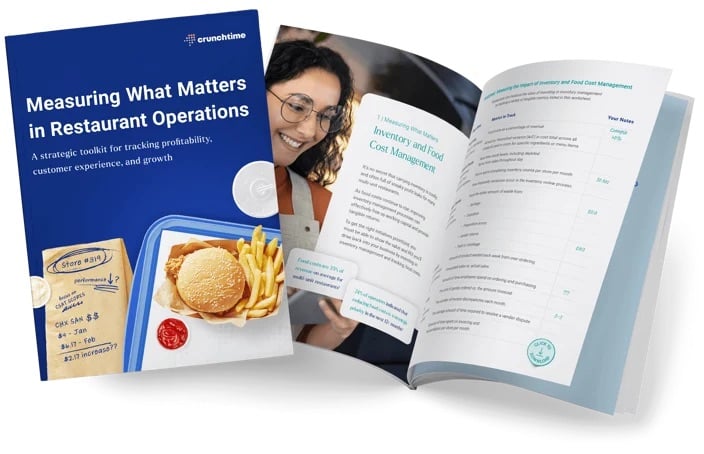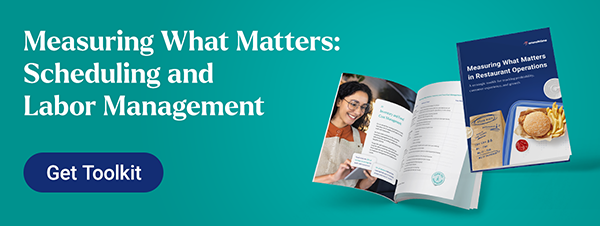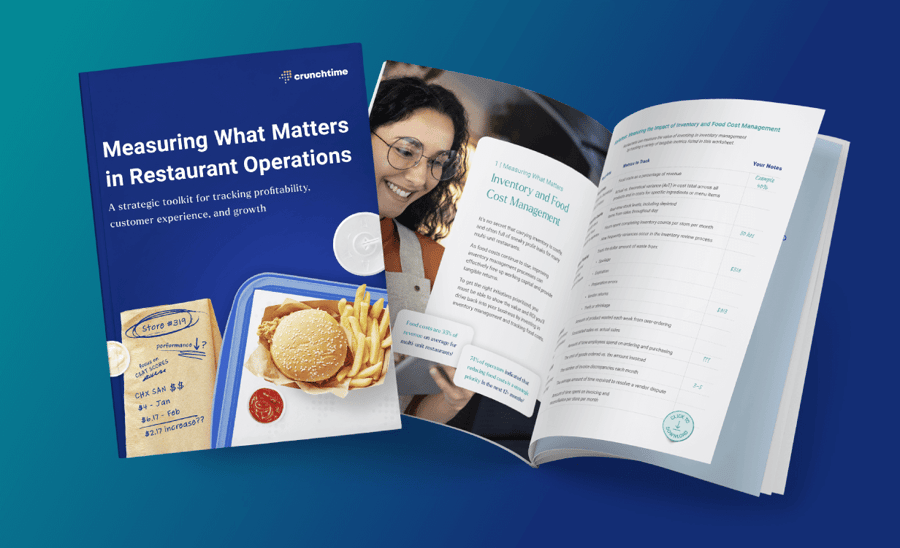
- Home
- Crunchtime Blog
- 4 Focus Areas to Measure the Impact of Scheduling and Labor Management in Restaurants

4 Focus Areas to Measure the Impact of Scheduling and Labor Management in Restaurants
What if you could pinpoint exactly where to improve labor management and find hidden sources of payroll overspend or stifled productivity?
It starts with understanding the impact that your labor and scheduling processes have on profitability, employee engagement, and retention.
But how?
Measuring What Matters in Restaurant Operations is a new guide that illustrates the ROI you can drive back into your business by tracking scheduling and labor management.
To maintain profitability in this challenging operating environment, restaurants need to keep a tight grip on their labor costs. How well a restaurant creates its staff schedules is one of the most significant measures of efficiency. Unfortunately, effective scheduling is an area in which many operators have room for improvement. 38% of shifts are either under- or over-staffed—both of which negatively impact restaurant operations.
Over-staffing shifts when business is slow is one of the fastest ways that operators unintentionally erode profits. On the other hand, understaffing shifts is a surefire way to degrade the guest experience and impact the quality of your establishment.
An efficient schedule should place the right number of staff, at the right time, in the right positions to meet demand during every shift of the week. By focusing on the right data, operators can pinpoint exactly where they can improve their labor management strategy and find hidden sources of payroll overspend or stifled productivity.
As outlined in the guide, restaurants can measure the value of investing in labor management by tracking a variety of tangible metrics in these four key focus areas:
1. Schedule CreationMaking and managing schedules
2. Staffing Levels
Forecasting the right mix of employees
3. Change Management
Scheduling flexibility
4. Compliance
Abiding by payroll and labor laws across locations
Start tracking key metrics within these four key focus areas to demonstrate how investing in better scheduling and labor management can deliver a clear return on investment.
The guide also includes a downloadable worksheet that you can use to jot down your own notes and benchmarks, and also share it with anyone responsible for the success of your stores. You’ll also see real ROI outcomes from real brands like Sweetgreen and UNO Pizzeria & Grill.
In today’s competitive labor market, restaurants should be focused on creating effective strategies around labor management and scheduling. Understanding the value of labor management and automated scheduling can be felt throughout the organization. With the right tools, your restaurant managers can be empowered to actively control labor costs for greater profitability. On the other hand, operators who fail to prioritize labor and scheduling will feel the burdens of their inefficiencies and continue to play catch-up.
The outcomes explained in the guide can also be realized in your organization. If you’re ready to learn how to calculate ROI, download Measuring What Matters in Restaurant Operations.
Share this post
Related


How to Measure What Matters in Multi-Unit Restaurant Operations





